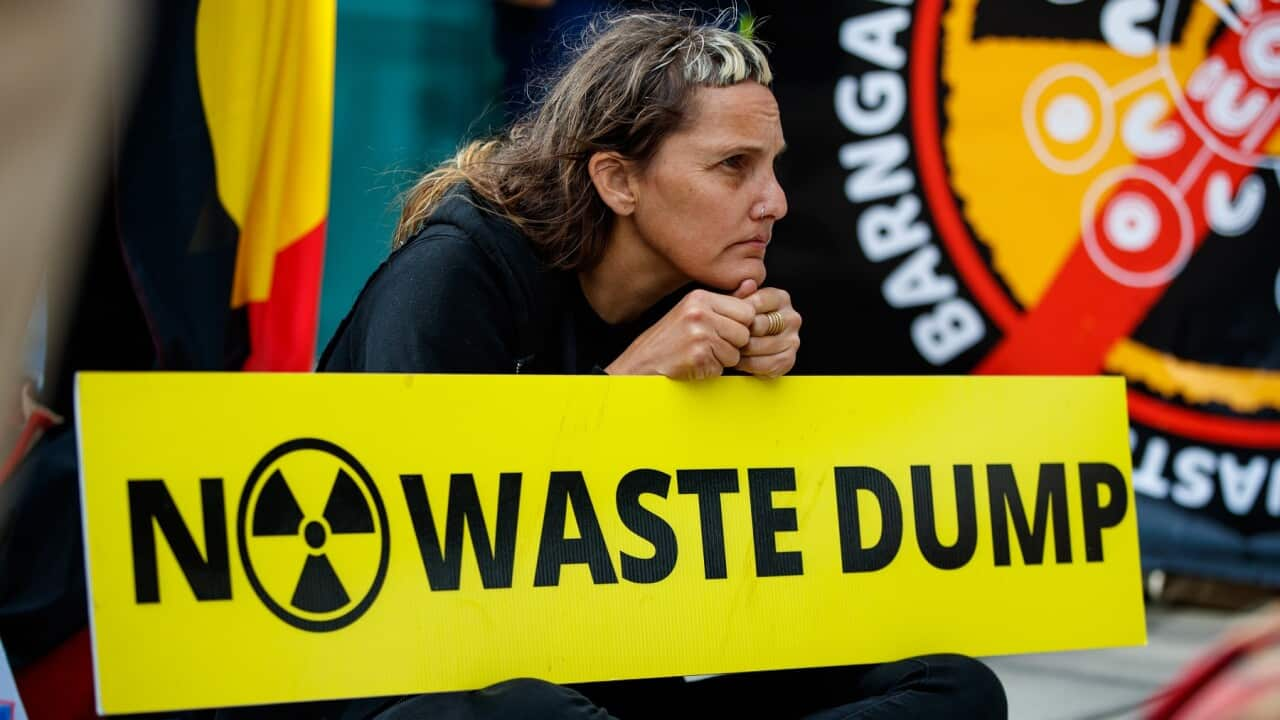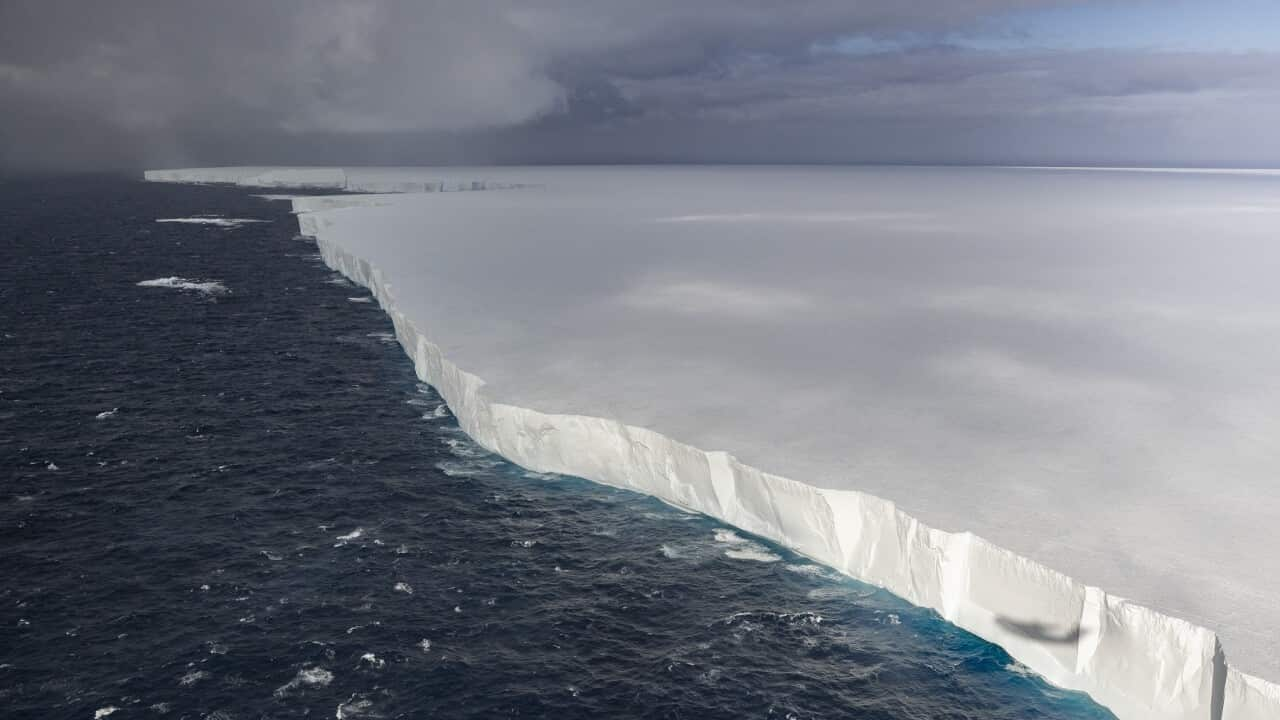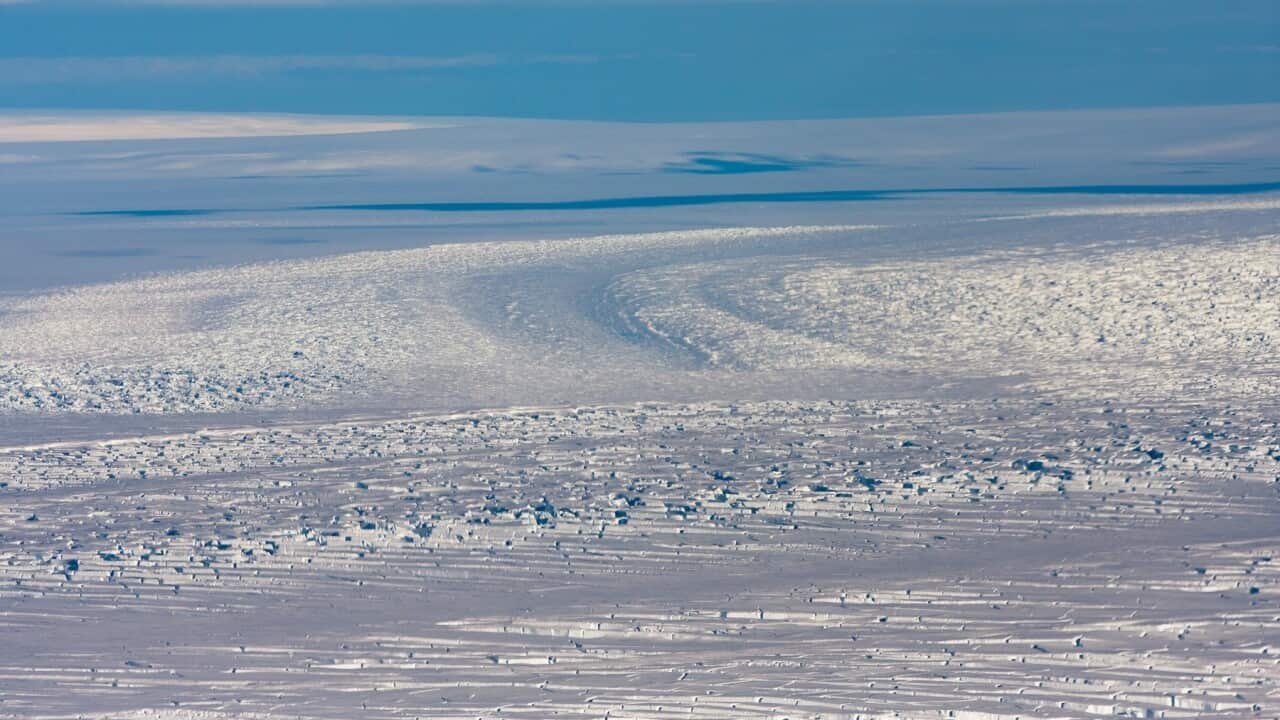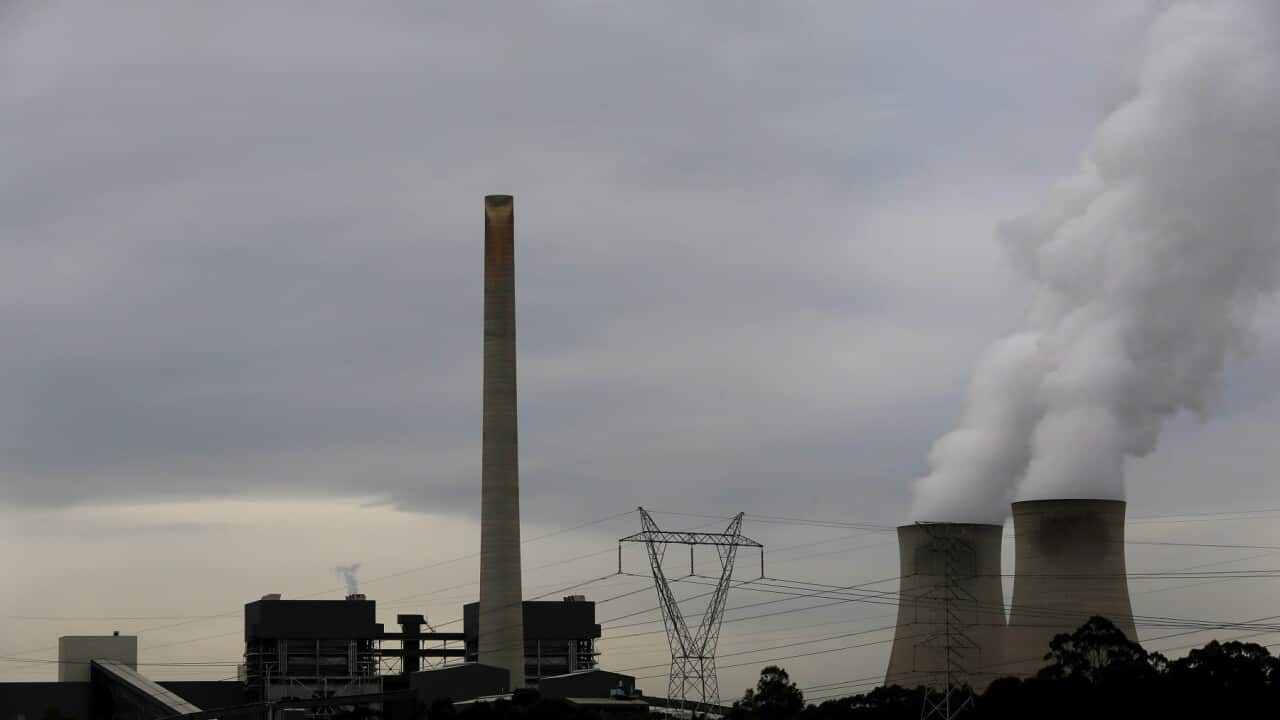TRANSCRIPT:
These protesters in the South Australian town of Port Augusta in 2018 were pushing back against a government proposal for a nuclear waste dump near the town of Kimba.
They took their fight all the way to the Federal Court, forcing Labor to ultimately abandon the plan.
But the issue of nuclear waste in Australia remains a controversial one.
Emeritus Professor Ian Lowe says that for now, much of Australia’s nuclear waste is stored near the nation’s only reactor at Lucas Heights in south-west Sydney, which is mostly used to make medicine, mining materials, and for research.
Low-level waste is also being stored in hundreds of cupboards, labs and hospitals nationally.
“Intermediate level waste is nastier. And it needs to be stored basically permanently for geological time, and it probably needs to be stored deep underground because the isotopes that are there can be harmful for thousands of years. At the moment, they're in temporary storage at Lucas Heights near the research reactor. And the capacity there is okay for perhaps 10 years, but sooner or later we're going to have to find a way of permanently disposing of the intermediate level waste. And that's a more serious issue than the low level waste. It needs to be deep underground and it needs to be in a properly engineered storage site. And we're talking big sums of money.”
That waste is safe and secure for now but the Australian Radioactive Waste Agency says this is not a sustainable solution long-term.
The government, opposition and Professor Lowe all agree.
“I mean, basically the temporary waste storage at Lucas Heights is just a very large shed with drums of radioactive waste.”
Australian Conservation Foundation campaigner Dave Sweeney says efforts to site a new nuclear dump have focused more on PR – and managing outrage.
"There has been 30 years of a divisive debate, of coercive attempts to impose radioactive waste, and there have been multiple fights at multiple sites, mainly in the Northern Territory and South Australia, where affected communities and particularly Aboriginal communities have been very very strident, strong and sustained in their opposition - and have defeated a proposal to put waste on their Country and the Canberra caravan has moved on."
A spokesperson for Resources Minister Madeleine King has said the government is reflecting on lessons learned from past siting processes as it assesses options for safely disposing of nuclear waste.
But Dr Lowe says the government has not learned the lessons of history.
"I think successive governments are just kicking the can down the road. If there is a plan, nobody knows about it.”
The debate is being revived because of the waste that will come from the on-board reactors of AUKUS subs.
This will be high-level waste – a more hazardous form Australia does not have right now.
The government plans to dispose of this weapons-grade waste on defence land – and Defence Minister Richard Marles says we have time to get it right.
“To be clear, we will not have to dispose of the first reactor from our nuclear-powered submarines until the 2050s. I want to assure the Parliament that there will be appropriate public consultation, particularly with First Nations communities to respect and protect cultural heritage. This will not be a matter of set and forget.”
In March last year Mr Marles told parliament the government would set out the process for selecting a site within 12 months, but 17 months on those details are yet to be announced.
Professor Lowe has criticised the bipartisan AUKUS agreement as being irresponsible without a waste management plan.
“I think if we're being asked to approve nuclear power reactors or nuclear submarines, we're entitled to see a clearly spelt out intellectually and morally and politically defensible solution for the problem that will inevitably be created. It's just not responsible to create a problem saying, we hope future generations will figure out a way to deal with it.”
Campaigner Dave Sweeney opposes any high-level waste, but says we need to face up to the challenge of intermediate waste – although he doesn’t want to see the process rushed.
"I think we need to just every party take a breath, acknowledge that radioactive waste is in this country, acknowledge that it has been poorly managed to date, realise that we have because of hard efforts of contests from Aboriginal people and local communities, we have now won ourselves some breathing space with the interim storage of intermediate level waste securely at the ANSTO facility and use that time not to regroup in our trenches, but use that time to gather at the table and genuinely consider pathways forward."
There appear to be some promising developments.
One company, called Tellus Holdings, has forged a new way forward for low-level waste, establishing a disposal site in West Australia - the first private firm ever licensed to do so.
CEO Nate Smith says the company has disposed of 6,000 cubic metres of radioactive material since its facility opened one-and-a-half-years ago – after ten years of consultation.
"With Kimba and others, I think government has announced the site, and then done engagement, and I think that puts people on the back foot. It all starts with trust. For us that was sitting down over cups of tea or going to the pub, it was sharing our vision of what we wanted to do and really understanding the community’s perspective but also their aspirations, and I think one of the biggest things we did that was in stark contrast to government is look we gave our Traditional Owners a veto right. For us, the whole concept from the start was, this is their land.”
Tellus Holdings will not accept intermediate or high-level waste, but Mr Smith says the company is eager to take on more low-level material, arguing this would free up space for interim storage at Lucas Heights.
“It would allow ANSTO and ARWA and others to focus on the real challenge right now, which is intermediate and high-level waste, because it’s coming with AUKUS and it’s already in existence from the Lucas Reactor.”
The Coalition’s plan for a nuclear power industry would also create more high-level waste if it goes ahead.
In a statement to SBS, the Opposition’s resources spokeswoman Susan McDonald said the Coalition anticipates that it would be stored on-site with the proposed nuclear power reactors and eventually disposed of permanently alongside the AUKUS material.
Professor Ian Lowe says the public deserves to know more.
“The one thing we know about nuclear reactors, they produce high level waste that has to be managed for geological time. And if we were to go ahead and build seven nuclear reactors by 2035, by 2036, we would be producing high level radioactive waste. So we really need to hear from the Coalition how they propose to resolve that problem.”













